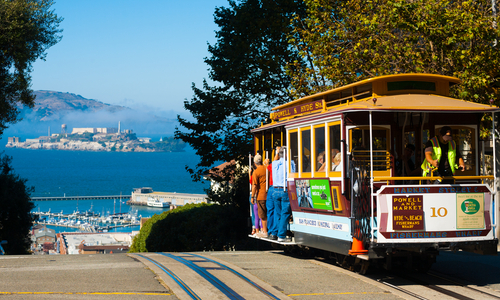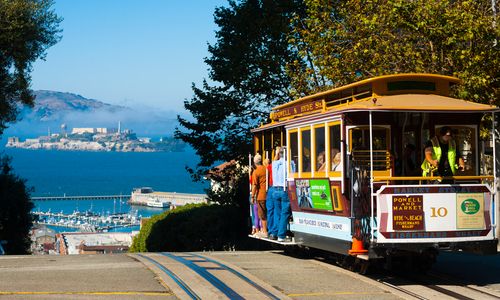


New York City is a driver of global finance and a hotbed of arts and culture. It’s also known for green spaces, like Central Park and the award-winning High Line.

San Francisco is celebrated for its narrow streets, compact lots and historic buildings. These contribute to the city’s old-world charm, but they’re also the building blocks of a more sustainable, pedestrian-friendly urban form that reduces the need for cars.
The world’s leading cities also owe their success to government investments in transit systems that move residents safely and affordably using a range of solutions, from light rail and subways to bus rapid transit (BRT) networks. The latter include state-of-the-art fast vehicles that run in lanes separated from traffic. The City of Markham, north of Toronto, is building an impressive BRT network with rapid transit corridors for a fleet of modern and comfortable fast buses.
Transit-oriented cities have better air quality with lower greenhouse gas emissions and benefit from reduced traffic congestion with shorter commuting times. Evidence even shows people in cities with a range of transportation options, like Vancouver, are less sedentary, get more exercise and are happier and healthier as a result.
There’s growing recognition that prioritizing transit is crucial to moving a region forward. Since the 1970s, Curitiba, Brazil, a city of 1.9 million, has invested billions in its bus rapid transit network. There, public transportation is fully integrated into planning decisions. High-density hubs with shopping centers and office buildings are located within walking distance of transit stations and commuters have access to a fleet of more than 2,000 modern, low-emission buses, servicing 390 routes that crisscross the city and connect it to surrounding communities. Eighty-five percent of Curitiba’s residents use the BRT system, which has reduced car trips by a whopping 27 million a year.
But you don’t have to travel far to see how transit investments can improve residents’ lives. In his book, Arrival City, Globe and Mail columnist Doug Saunders argues that easy access to transit, among other factors, is one reason Toronto’s Thorncliffe Park has avoided many social problems that plague similar inner-city neighborhoods. Though most are recent immigrants, half speak a first language other than English and many are poor, Thorncliffe Park residents integrate well into Canadian society, and many enter the urban middle-class within a generation. Saunders believes this is in part because the neighborhood is well connected to Toronto’s downtown, with bus and subway routes, and easy access to schools, employment and other opportunities. Transit facilitates social and economic links to the core of the city and helps residents overcome the physical isolation that plagues many communities.
Politicians are starting to recognize transit’s importance to the economic, social and environmental health of Canadian cities. It’s even become a major issue in the Ontario election. Premier Kathleen Wynne committed $29 billion over 10 years in the recent budget to expand transit networks in the Greater Toronto and Hamilton Area and other regions of the province, but the budget failed to pass. Other parties have committed to funding improved transit if they’re elected, but all of them need to step up with concrete details and credible plans to ensure dedicated and sustained funding.
More problematic is the reluctance of the major political parties in Ontario to consider new revenue tools, such as modest increases in the gas tax or regional sales tax. Polls show most residents support increases in taxes and fees to improve transit, and two expert panels studying the issue have recommended fiscal solutions such as these.
Transit investments are a catalyst for change. They reduce barriers that strangle economic productivity and improve the well-being of commuters who would otherwise be stalled in gridlock.
It’s time to put people ahead of politics and support dedicated transportation investments in Ontario and other provinces. Doing so will transform the way our communities move and generate numerous other benefits. Effective transit and transportation solutions can spur economic productivity, protect the environment and improve quality of life. It’s time to get moving.
Written with contributions from David Suzuki Foundation Ontario and Northern Canada Director General Faisal Moola.
——–
YOU ALSO MIGHT LIKE
Starting Small Pays Big Dividends in the Urban Green Revolution
Ranking the 10 Greenest Mid-Size Cities in the U.S.
Is It Time for a Real War on Cars?
——–

 233k
233k  41k
41k  Subscribe
Subscribe 